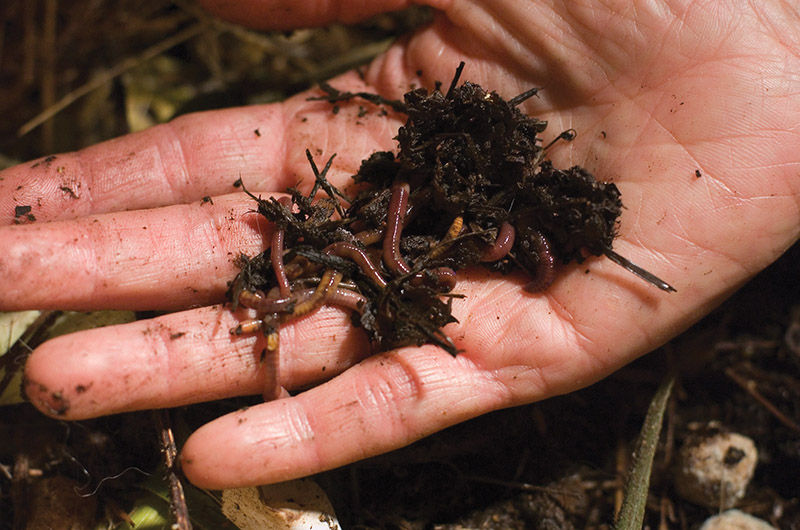Using Red Wigglers for Effective Organic Garbage Disposal
The use of red wigglers for organic garbage disposal presents an engaging strategy to handling food scraps while promoting environmental sustainability. These worms not just improve waste decay yet also generate important worm castings, which can significantly boost dirt health. Their ability to process large quantities of organic product with marginal initiative positions them as an obtainable solution for houses and communities alike. Comprehending the subtleties of setting up an effective worm bin and keeping an optimum habitat is important for optimizing their advantages. The following actions in this process might stun you.
Advantages of Using Red Wigglers
Among the most engaging benefits of using red wigglers for organic garbage disposal is their amazing performance in composting. These worms, medically recognized as Eisenia fetida, are especially adapted for breaking down natural products, allowing them to process waste as much as two times their body weight each day. This rapid decay not just increases the composting procedure but also generates nutrient-rich worm castings that substantially boost dirt top quality.
Furthermore, red wigglers contribute to a decrease in garbage dump waste. By drawing away natural products from garbage dumps, they assist reduce methane discharges-- a powerful greenhouse gas. This environmental benefit is important in the battle against climate modification.
Moreover, red wigglers are low-maintenance and can prosper in numerous environments, making them obtainable for both novice and experienced composters. Their ability to duplicate quickly ensures a stable populace, helping with ongoing waste handling.
Establishing Up Your Worm Bin
Producing an efficient worm container is crucial for making best use of the benefits of composting with red wigglers. The primary step is choosing a suitable container. A container made of plastic or timber, with a capacity of 10 to 20 gallons, is excellent. Make certain the bin has appropriate drain openings to avoid excess wetness, as red wigglers prosper in a damp yet not soaked atmosphere.
(Lake James Bait)Following, prepare the bedding material, which offers as the worms' habitat and food resource. The container should be placed in a dark, temperature-controlled location, preferably in between 55 ° F and 77 ° F, to maintain worm task.
As soon as the container is established, introduce the red wigglers, permitting them to accommodate to their new environment. It's critical to keep an eye on wetness levels and temperature regularly. A well-kept container will certainly not only sustain the health of the worms but also assist in efficient decomposition of organic waste. By complying with these guidelines, you can develop a flourishing ecosystem that adds to lasting waste administration.
(red worms)
What to Feed Red Wigglers
An understanding of the proper diet plan for red wigglers is important for keeping a healthy and balanced worm populace and maximizing composting performance. Red wigglers flourish on a varied diet regimen that largely includes organic materials. Suitable food sources consist of veggie scraps, fruit peels, coffee grounds, eggshells, and shredded paper. These items not just offer essential nutrients yet likewise add to the moisture balance within the worm bin.
It is vital to avoid certain foods that can harm the worm populace. Red wigglers should not be fed meat, milk products, oily foods, or processed things, as these can draw in bugs and create unpleasant smells. red wigglers. In addition, citrus fruits and spicy foods ought to be decreased, as their acidity can be harmful to worms
Keeping an eye on the worm container for food intake prices will certainly help make certain that red wigglers are obtaining an appropriate diet while keeping an effective composting atmosphere. Correct feeding methods are important for cultivating a thriving community within the worm bin.
Preserving Your Worm Habitat
A well-kept worm habitat is important for the health and wellness and productivity of red wigglers. To ensure optimal problems, it is vital to keep an eye on temperature level, moisture, and oygenation within the worm container (red wigglers).
Wetness degrees need to be maintained consistent; the bedding needs to perspire yet not soggy. An excellent guideline is to keep dampness at around 70% to 80%. If the bed linens ends up being also wet, it can cause anaerobic problems that are dangerous to the worms. Adding dry carbon-rich materials, such as shredded paper or cardboard, can aid soak up excess moisture.

Using Worm Castings in Gardening
Rich in nutrients and beneficial microorganisms, worm spreadings act as an exceptional organic fertilizer for gardening. Generated with the digestion procedures of red wigglers, these castings include a selection of vital nutrients, including nitrogen, phosphorus, and potassium, which promote robust plant growth. Unlike synthetic fertilizers, worm castings provide a slow-release mechanism, making sure that nutrients are readily available to plants over an extended duration, thereby decreasing the risk of nutrient leaching and soil deficiency.
In enhancement to nutrient web content, worm spreadings improve dirt structure and oygenation, enhancing moisture retention and water drainage. The microbial life present in worm castings aids to subdue pathogens and advertises a healthy and balanced soil community, additional benefiting plant health and wellness. When included right into the dirt or used as a top dressing, worm spreadings can substantially increase seed germination prices, root growth, and total plant vitality.
For optimum results, garden enthusiasts need to use worm castings at a price of 1-2 inches per square foot, blending them into the soil or incorporating them right into potting blends. In general, utilizing worm castings is an environment-friendly strategy to enriching soil fertility and guaranteeing prospering garden settings.
Verdict
